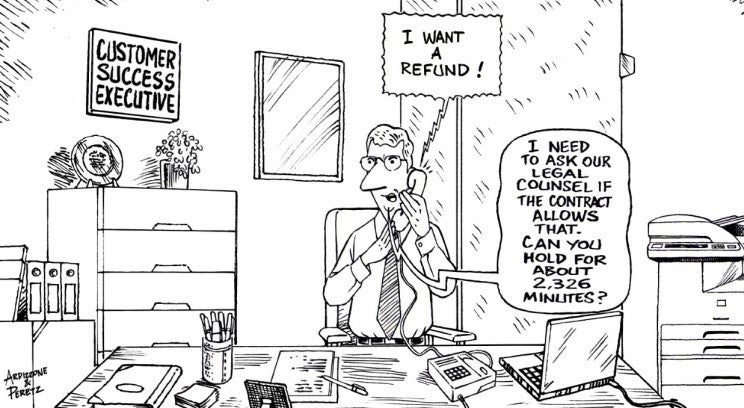
As an in-house counsel, one of your key roles is to negotiate agreements that obligate your organization and counterparties for many years. After these agreements are signed, the true value of the agreement begins to accrue and the real work begins. To be a great in-house lawyer, you need to get out of your office and communicate key information about these agreements to your operations team.
In this column, we will discuss common contract components that need to be communicated and understood by your colleagues outside of the legal department, which provides an opportunity for them to appreciate your value.
Integrations clauses are not just for trial
Back in law school, you learned that an integration clause (sometimes called a merger clause) can be useful at trial and during pre-trial motions in limine to focus the discussion and control which documents and testimony can be presented.
A typical integration clause states that the contract that contains the clause represents the full and complete agreement between the parties and supersedes any other agreements, oral or written, on the same subject. At a trial, you may reference the integration clause to quash an effort by a counterparty to introduce additional evidence about the bargain made between the parties.
If you plan ahead, the presence and meaning of the integration clause may make that trial avoidable. Educate your operations and customer support teams about the presence of any integration clauses in your own agreements. Salespeople and marketing materials may discuss a range of capabilities that your company could provide, but your client’s order may only include a subset of these features or services.
Your client may forget the scope of the order after your contract is signed and call to demand services outside the scope of the order. This is a good time for your customer support team to have your client contract handy and understand and communicate the meaning of an integration clause contained in it.
Make sure your team has access to client agreements and that such documents are readily shared with your clients. Then your customer support team can explain to an overreaching client that the contract governs the services to be provided by your organization and the integration clause contained therein means that all the requirements, obligations, and responsibilities are written in the contract itself, regardless of pre-signing discussions and marketing materials. Clients generally appreciate explanations that reference the actual agreement they signed with your organization, rather than feeling that you are acting arbitrarily or illegitimately.
Of course, for valued clients or to build goodwill, you can provide an offering beyond what it states in the contract that contains the integration clause. However, bear in mind that the integration clause only precludes evidence that existed prior to signing the agreement — it will not help exclude evidence of post-contractual commitments.
Accordingly, you should caution your operations team about the impact of new commitments that they make. And consider whether your agreements should contain a no waiver clause and require that modifications be in writing.
The other three R’s
For organizations providing a good or service, some of your customer agreements may contain a limit on the remedies you will offer in the event that the client is dissatisfied, with remedies often referring to some combination of repair, refund, or replace. When you were negotiating the agreement, you might have thought of this limitation as a convenient method of reducing your risk exposure.
If your product is sold at a high margin, for example, it may be substantially less expensive for you to provide a replacement instead of a refund. On the other hand, if you want to be able to part ways quickly with unsatisfied customers who might not be a fit for what you are offering, you might want to limit remedies to a refund.
None of these risk reduction methods will help your company unless your customer support team knows what is in your agreements. If there are limits you impose on the remedies your company provides, the team interfacing with customers needs to know this and have processes in place to act on them.
And the customer support team should have direct access to the customer’s agreement that it can share with the customer and highlight the language describing these remedies. Customers are far more understanding of a result where they are shown that they are being given the specific remedy that they bargained for. And your organization can respond more quickly when it knows in advance what remedies it needs to provide and plans ahead with the right processes.
1-800-IN-HOUSE Counsel
If you don’t educate your customer support team about these key terms in your agreements, expect an ongoing stream of calls from internal stakeholders about how to manage a particularly disgruntled client. Clients who do not receive an acceptable result based on their actual agreement with your organization are likely to escalate their complaints. This means that calls beginning in customer support wind up in the inbox of more senior executives, including you.
To empower customer support to handle these matters directly, make sure they can directly access customer agreements and share them directly with the customer. Teach your customer support the meaning of key sections of your agreement, such as the integration clause and specific limits on remedies.
For most organizations, customer agreements change over time in response to new regulations and changes in product offerings. As a result, an integration clause may be inadvertently excluded or a limitation on remedies might be altered in later versions.
Accordingly, you need to teach your customer support team to not make blanket assumptions about customer agreements based solely on one prior version of such agreement. Make sure they read the actual sections of that customer’s specific agreement when addressing the customer, rather than rely on an inapplicable prior template.
When you are drafting new customer agreements, you can also inquire about how often customers have misperceptions about the scope of your offering and the remedies they typically seek when they are unhappy. Use this information to update your preferred form of customer agreement to better address these concerns.
By proactively educating your customer support and operations team, you have an opportunity to increase your own profile in the organization, reduce operations costs, and learn more about how your company works.




